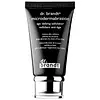What's inside
What's inside
 Key Ingredients
Key Ingredients

 Benefits
Benefits

 Concerns
Concerns

 Ingredients Side-by-side
Ingredients Side-by-side

Water
Skin ConditioningAlumina
AbrasiveCaprylic/Capric Triglyceride
MaskingGlycerin
HumectantCetyl Alcohol
EmollientGlyceryl Stearate
EmollientPEG-100 Stearate
Ammonium Acryloyldimethyltaurate/Vp Copolymer
Simmondsia Chinensis Seed Oil
EmollientXanthan Gum
EmulsifyingPhenoxyethanol
PreservativeLactic Acid
BufferingParfum
MaskingMenthone Glycerin Acetal
RefreshingAllantoin
Skin ConditioningDisodium EDTA
Tocopheryl Acetate
AntioxidantMagnesium Oxide
AbsorbentPropylene Glycol
HumectantAloe Barbadensis Leaf Extract
EmollientVitis Vinifera Seed Extract
AntimicrobialChamomilla Recutita Flower Extract
MaskingCamellia Sinensis Leaf Extract
AntimicrobialCitral
PerfumingLimonene
PerfumingWater, Alumina, Caprylic/Capric Triglyceride, Glycerin, Cetyl Alcohol, Glyceryl Stearate, PEG-100 Stearate, Ammonium Acryloyldimethyltaurate/Vp Copolymer, Simmondsia Chinensis Seed Oil, Xanthan Gum, Phenoxyethanol, Lactic Acid, Parfum, Menthone Glycerin Acetal, Allantoin, Disodium EDTA, Tocopheryl Acetate, Magnesium Oxide, Propylene Glycol, Aloe Barbadensis Leaf Extract, Vitis Vinifera Seed Extract, Chamomilla Recutita Flower Extract, Camellia Sinensis Leaf Extract, Citral, Limonene
Water
Skin ConditioningGlycolic Acid
BufferingPEG-8
HumectantAlcohol Denat.
AntimicrobialArginine
MaskingSodium C14-16 Olefin Sulfonate
CleansingSodium Hydroxide
BufferingLactobionic Acid
BufferingCocamidopropyl Betaine
CleansingCitrus Grandis Peel Oil
MaskingPolysorbate 20
EmulsifyingPropylene Glycol
HumectantCaprylyl Glycol
EmollientPhenoxyethanol
PreservativeChlorphenesin
AntimicrobialLimonene
PerfumingIngredients Explained
These ingredients are found in both products.
Ingredients higher up in an ingredient list are typically present in a larger amount.
Limonene is a fragrance that adds scent and taste to a formulation.
It's found in the peel oil of citrus fruits and other plants such as lavender and eucalyptus. The scent of limonene is generally described as "sweet citrus".
Limonene acts as an antioxidant, meaning it helps neutralize free radicals.
When exposed to air, oxidized limonene may sensitize the skin. Because of this, limonene is often avoided by people with sensitive skin.
The term 'fragrance' is not regulated in many countries. In many cases, it is up to the brand to define this term. For instance, many brands choose to label themselves as "fragrance-free" because they are not using synthetic fragrances. However, their products may still contain ingredients such as essential oils that are considered a fragrance.
Learn more about LimonenePhenoxyethanol is a preservative that has germicide, antimicrobial, and aromatic properties. Studies show that phenoxyethanol can prevent microbial growth. By itself, it has a scent that is similar to that of a rose.
It's often used in formulations along with Caprylyl Glycol to preserve the shelf life of products.
Propylene Glycol is an odorless, colorless liquid. As a humectant, it helps skin retain moisture. It also aids in delivering active ingredients.
Another role of this ingredient is preventing a product from melting or freezing. Propylene glycol also adds antimicrobrial properties to a product, elongating product lifespan.
This ingredient is considered an organic alcohol and commonly added into both cosmetics and foods.
Those with sensitive skin or conditions may develop a rash when using this ingredient.
Learn more about Propylene GlycolWater. It's the most common cosmetic ingredient of all. You'll usually see it at the top of ingredient lists, meaning that it makes up the largest part of the product.
So why is it so popular? Water most often acts as a solvent - this means that it helps dissolve other ingredients into the formulation.
You'll also recognize water as that liquid we all need to stay alive. If you see this, drink a glass of water. Stay hydrated!
Learn more about Water